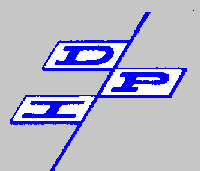 DPI HISTORY
DPI HISTORY

 DPI HISTORY
DPI HISTORY

For those of you who have never met him and perhaps never even heard of him - Meet LeRoy (Roy) J. Score, the Founder of Data Pathing, Inc. Years before there was a DPI Roy was called the "Father of Data Collection and the Total Systems Concept." His response was - "It is a pleasant accolade, possibly merited, possibly not. It is true, however, that I have for years been an articulate missionary and pioneer in the field."
1957/58 - Roy Score, using Friden Flexowriters, conceived and directed the installation of the first integrated data collection system, consisting of 60 simple transmitters cabled into a central data receiver, to control materials on the B-58 Hustler assembly line in the Fort Worth plant of Convair.
Early 60's - The introduction and proliferation of electro-mechanical transmitters and receivers for data collection. Principal vendors were IBM, Friden, and CDC/Stromberg-Carlson. The Receiver output media was punched cards or paper tape requiring media conversions, edit runs and corrections before data processing.
Fall of 1961 - A presentation to the Data Collection and Communications group at the 14th International Systems Meeting of the Systems and Procedures Association in Cleveland Ohio entitled "Datapathing" Your Information Transfer Systems was made by Roy Score. It began:
This is the first time anyone has ever read, or heard, the word "DATAPATHING." Although it is only a coined term, it has a deep and very significant meaning. It is a verb which describes the task of plotting and planning the flow of any and all data pertinent to the smooth, efficient, and profitable operation of any manufacturing and/or accounting complex.
Before founding DPI Roy was the top salesman for Friden CollectaData Systems. He was not a technical oriented person but was observant to what was needed and innovative in providing it. Dave Lowe once said "Roy would promise the customer all kinds of things that I would tell him were impossible to do with the system. Then when the equipment arrived on site, Roy would come in and make it work the way he promised." But Roy was not satisfied with the state of the systems technology. Data transmission was over 30 characters-per-second, multiwire, 90 volt, difficult to install cables. Badge and card readers were slow electromechanical devices subject to environmental damage. Punched tape or cards required handling and conversion. And on and on. (See Founding Principles). Friden was satisfied with their leadership position and not willing to engineer new solutions. Roy decided to.
APRIL 3-7, 1963 - Excerpts from minutes of the meeting:
The first meeting of Data Pathing Systems began at 6:00 PM on Wednesday, April 3, in the President Suite of the Sheraton Elm's Hotel in Excelsior Springs, Missouri. Mr. Score conducted the meeting. A general outline was given of expected topics to be discussed in the next 4 days, feasibility of products, organization chart, personnel, location and benefits.Those in attendance were: Mr. L. R. Score, Mr. Edward Merseth, Mr. Eric Weiss, Mr. Dave Lowe, Mr. James Pike, Mr. Dave Taylor, and Mrs. Peggy Rutherford.
Mr. Score announced the needed capital would be 2 1/2 Million to insure 2 years operation.
There was some discussion on the location of the company. Of prime concern is personnel wishes and cost. It was the rule of the majority that California was the only suitable site.
JUNE, 1966 - DPI unveiled SOLAR, the first all-electronic Data Collection System at the O'Hare Inn, in Chicago, IL. to representatives from Western Electric, U. S. Steel, and Automatic Electric. The 1204 Multifunction Terminals and the 2102 Processor demonstrated a system concept consisting of terminals, human engineered for ease of operation and designed to exist in the harsh factory floor environment connected via simple 2-wire lines to the controlling processor which provided the transaction data editing and validation, and recording of the EDP required record formats on magnetic tape while the factory worker was at the terminal and could provide any error corrections.
OCTOBER, 1966 - The first public demonstration of Solar at the BEMA Show in Chicago.
NOVEMBER, 1966 - The first shipment. Sent to Globe Union in Milwaukee on a trial basis.
JANUARY, 1967 - The first shipment. Sent to Globe Union in Milwaukee on a trial basis.
APRIL, 1967 - The G.E. Bloomington system went live.
MAY, 1967 - The second system went live at the General Dynamics, Fort Worth Plant. Within a year this initial system was upgraded to (3) 2103 Processors, triple terminated.
1967-1969 - 38 Systems were installed. For a trip down that memory click here. Note that an NCR plant was the fifth customer installed. It was this experience by NCR that led to their decision to buy DPI almost nine years later.
JUNE, 1968 - The first on-line interface to an IBM 360 was installed at Grumman Aircraft in Bethpage, Long Island, New York.
SEPTEMBER, 1970 - The first system with disk file capability was installed at Rockwell in Downey, CA. This system also contained the first interface to an IBM 360 running IMS.
1968-1972 - IBM redesigned their system twice. Singer Friden went out of the market, redesigned, re-entered the market and then closed down. CDC tried to redesign, failed and went out of the market.
JULY, 1973 - The first 3270 Emulation Interface was installed at Caterpillar Corporation in Peoria, IL.
JANUARY, 1976 - The MIT Multifunction CRT Terminal based system was installed at the McDonnell Douglas Company in Long Beach, CA.
JUNE, 1976 - NCR purchased Data Pathing, Inc.
September, 1991 - AT&T purchased NCR.
April, 1992 - Bill Hill finally had to throw away the last of his DCOS/AIDE Listings, Product Specs, Logic Diagrams, and many other software and hardware documentation to lighten the load for the move from Dayton, OH to Morristown, TN. He cried a lot!!!
![]()
Home | Logos |
Lists | Pictures
| Nicknames |
Happenings |
| People | Trivia
| History | Principals
| DPI Stock |
![]()